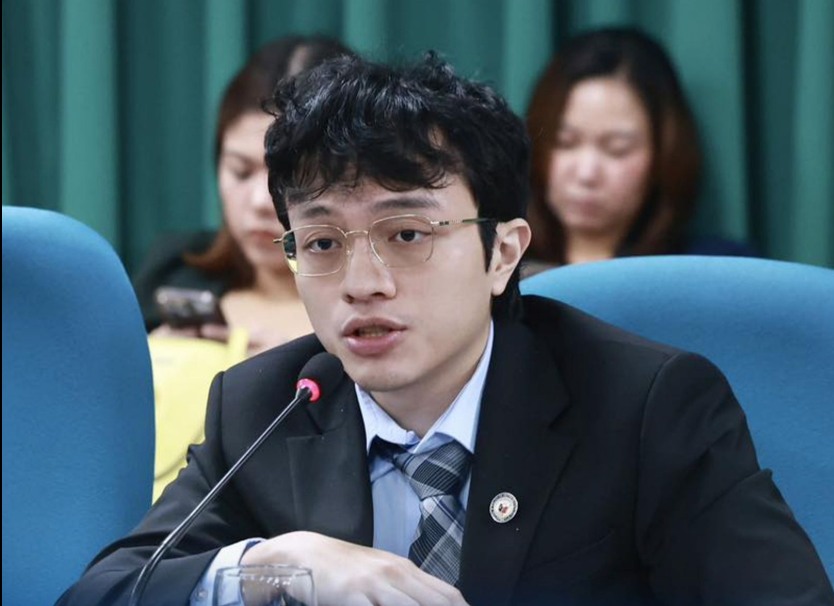By RAFFY GUTIERREZ
For decades, the idea of amending or replacing the 1987 Philippine Constitution has been either demonized or politicized. Every time the word “Charter change” surfaces, it’s met with the same recycled fears: dictatorship, land-grabbing, foreign invasion, or political dynasties tightening their grip. But here’s the truth: the real problem isn’t the concept of changing the Constitution. The real problem is that the conversation has always been hijacked by the wrong people—those who lack credibility, competence, or even basic technological literacy.
What we need isn’t just Charter change. We need intelligent, data-driven, transparent constitutional reform. And that can only happen under a technology-oriented government—one that can deliver trust through systems, build logic through data, and implement reforms with precision, not propaganda.
Let’s be clear: the current Constitution is outdated for today’s world. It was written for a post-Marcos era defined by trauma, not opportunity. It assumes that all foreign investors are threats, all decentralization leads to abuse, and all national progress should come from Manila. It locks out global competition, stifles innovation, and treats technology as an afterthought. It was written in an analog world—but we now live in a digital one. We are quickly approaching the next industrial revolution which is the AI Revolution but our leaders are clueless on what to do.
A government grounded in technology would immediately recognize this mismatch. It would use data analytics to pinpoint the exact sectors being hampered by protectionist clauses. It would model economic forecasts showing how opening up public utilities or media could boost GDP, create jobs, and drive innovation. A tech-literate government doesn’t rely on gut feel or ideology—it uses dashboards, simulations, and evidence.
One of the biggest fears about Charter change is lack of trust. People worry that the process will be manipulated. This is where a tech-oriented administration becomes crucial. With blockchain-backed transparency tools, digital consultation platforms, and AI-driven citizen feedback aggregation, the constitutional reform process can be decentralized, democratized, and depoliticized. Everyone can see the process. Everyone can track inputs and decisions. No more backdoor drafting. No more secret committees.
Imagine a National Digital Convention—not just full of lawyers and politicians, but coders, systems engineers, data scientists, and digital economy experts. Imagine if every Filipino could access proposed changes via a mobile app, vote on key reforms, or attend virtual town halls. That’s not fantasy. That’s just a government that knows how to use the tools of the 21st century.
Technology leaders also bring a unique mindset: iteration, feedback, agility. Instead of treating the Constitution as a sacred, untouchable relic, they treat it as a living framework that must evolve—just like any software. They understand that locking down systems too tightly leads to collapse. They value adaptability over fear. That kind of thinking is exactly what we need for a Constitution meant to serve the next generation, not repeat the trauma of the last one.
Another critical benefit of tech-driven leadership? Speed and scalability. Traditional governments take years to plan, debate, and implement reforms. A digital government can test reforms in sandboxed local governments, simulate nationwide effects, and iterate rapidly. Think of it as constitutional A/B testing—start small, scale fast, correct quickly. It’s not about reckless change. It’s about smart, calculated evolution.
Of course, we still need integrity and values. But values alone cannot fix a broken structure. You can have the most honest leaders in the world, but if they’re working with a system that limits investment, discourages innovation, and centralizes power, they will still fail. The foundation itself must change—and only a government that understands systems design can rebuild it.
It’s time we stop fearing the word “Charter change” and start owning it—with logic, competence, and technological discipline. If the 1987 Constitution is the operating system Version 1.0 of the Republic, then we urgently need a Version 2.0—secure, scalable, inclusive, and future-ready.
The only kind of government that can deliver that is one built by technocrats, not traditionalists. Engineers, not entertainers. Policy hackers, not power hoarders.
Charter change must not be a political project. It must be a technological one. And whoever wants the Philippines to succeed in the AI Revolution must not be afraid to ignite a technology revolution.
———-
Rafael “Raffy” Gutierrez is a veteran Technology Trainer with over 25 years of experience in networking, systems design, and diverse computer technologies. He is also a popular social media blogger well-known for his real-talk, no-holds-barred outlook on religion, politics, philosophy.




